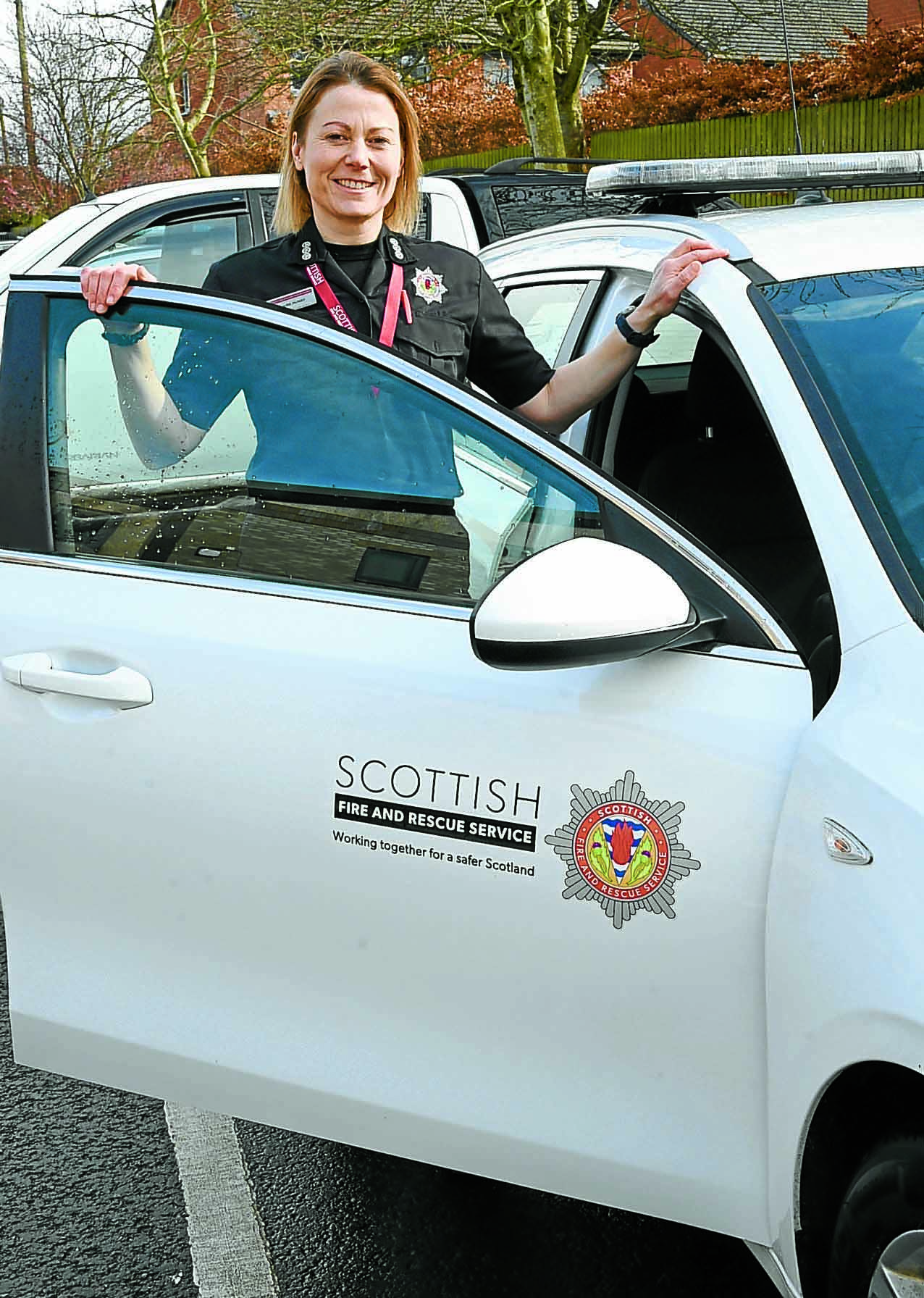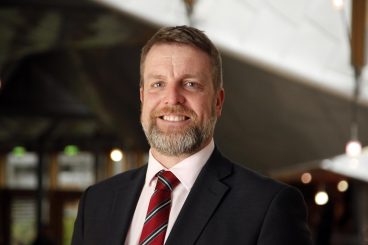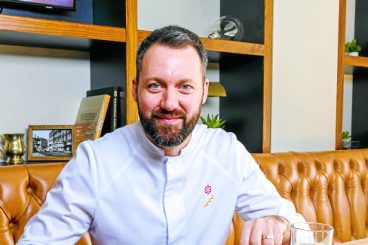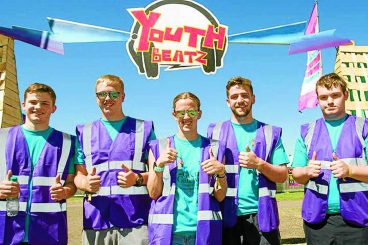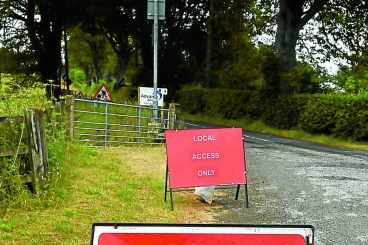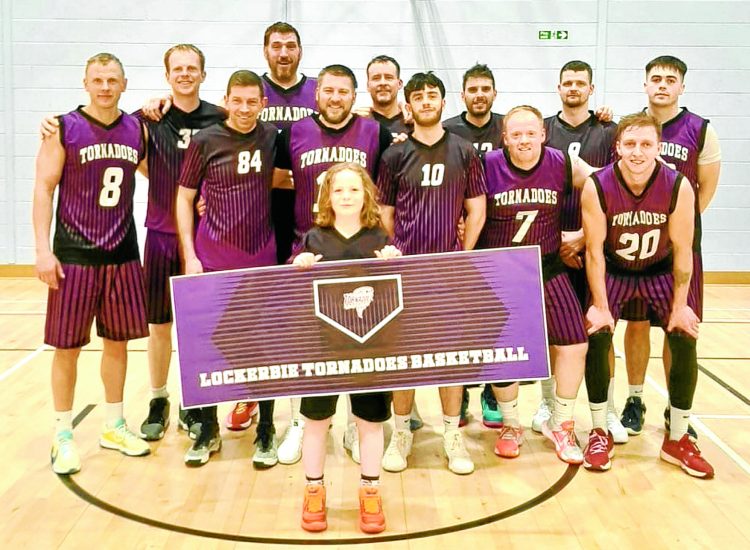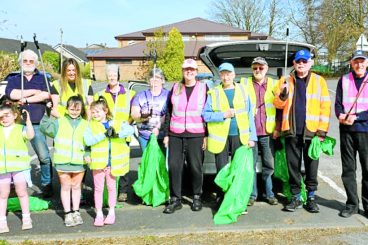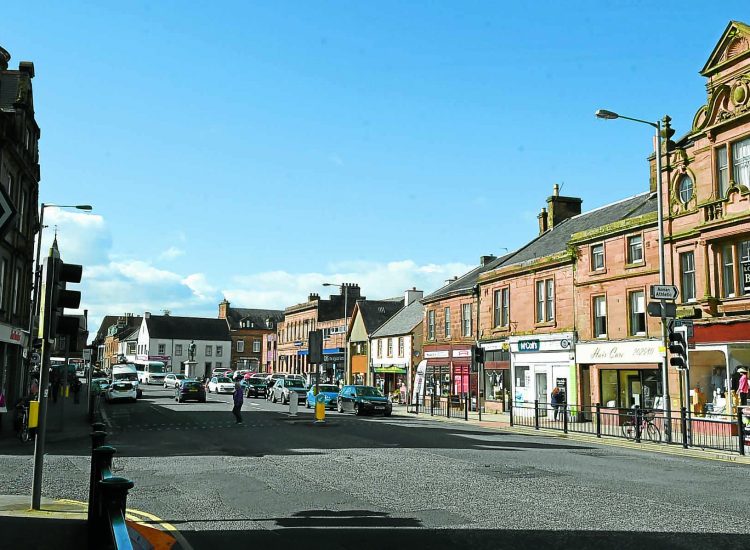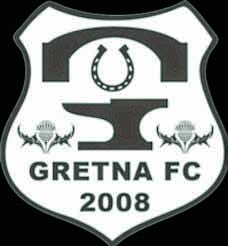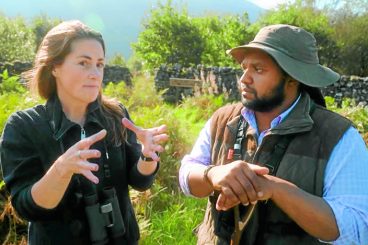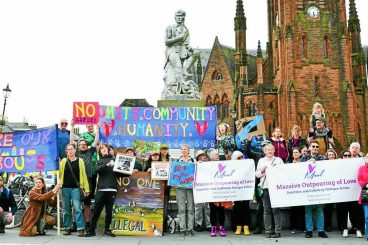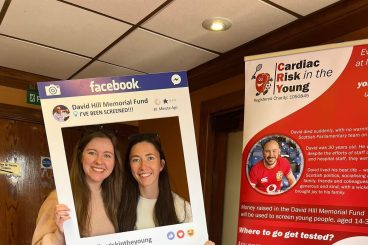FIREFIGHTING is shrugging off its traditionally male dominated image and is now seen as a career for all.
And one of those flying high in the service in Dumfries and Galloway is Stewartry station commander Claire McNay, pictured right, based in Dumfries headquarters.
She joined the Scottish Fire and Rescue Service (SFRS) 17 years ago and is an advocate of it as a career for everyone.
But it wasn’t originally her first choice and from childhood Claire, who grew up in the Midlands, wanted to be a vet.
She did a science degree at university and ended up working for a vet pharma firm, relocating to Dumfries and Galloway after falling in love with the area during a holiday here.
Moving here also prompted the change in career and she applied after hearing about a job from a firefighting friend.
Claire said: “I had a friend in the fire service and they said there were vacancies —it was completely out of the blue.
“I thought ‘I could do that’, I wanted a more physical job and liked the idea of having to get fit and having an active role.”
She applied and got in first time and was sent off to do 12 weeks initial training before returning to Dumfries in a firefighter development role.
It takes three years to be classed as a competent firefighter and since reaching that stage Claire has made the most of the development opportunities to progress.
After five years she was crew commander, becoming watch commander by 2016, and taking on her latest senior role last year.
Looking back to her very first day, Claire said: “It was quite daunting that first day in the station in Dumfries.
“It was a mainly male environment, there were less females back then than now.
“It was more traditional back then. I felt like I had something extra to prove because I was female but it has now changed dramatically.
“I was the only female on my watch but there was a female crew commander and watch commander and two female firefighters. Now there are seven whole-time female firefighters, as well as crew commanders and station commanders that are female.”
She describes how her colleagues all have ‘different attributes’ with everyone bringing something to the job, adding: “The service does like people to have a bit of life experience but there is a big age range from 18-60.
“For me, my degree although I have not used it specifically, has been useful.
“In my opinion it does not matter if you’re male or female, it’s a level playing field.”
As station commander, Claire looks after the five stations in her district.
Dumfries is the region’s only whole time fire station, with over 50 firefighters assigned there. The area’s other 17 stations are all manned by retained, or on-call, firefighters.
But the job and the callouts are the same, whether you’re full time or not.
Claire explained: “We deal with all sorts of things: RTCs, fires, animal rescue, farm fires, flooding, wild fires, and we assist other agencies
“Before you come into the service you tend to think it’s all about going out on the engine and being like Fireman Sam, but there’s a lot of behind the scenes and partnership work.
“I do not think members of the public realise that, they just see the emergency response but there’s a lot more to the job.”
For her, the most rewarding incidents are those where she feels like she’s made a real difference: “It’s where you know you’ve helped people, even for something minor, like a call from an elderly person about their CO2 alarm going off,” she said. “It does not have to be melodramatic, helping the community to feel safe in their homes and in the wider community is very rewarding.
“A lot of prevention work can be really rewarding too, before people find themselves in an emergency or difficult situation.”
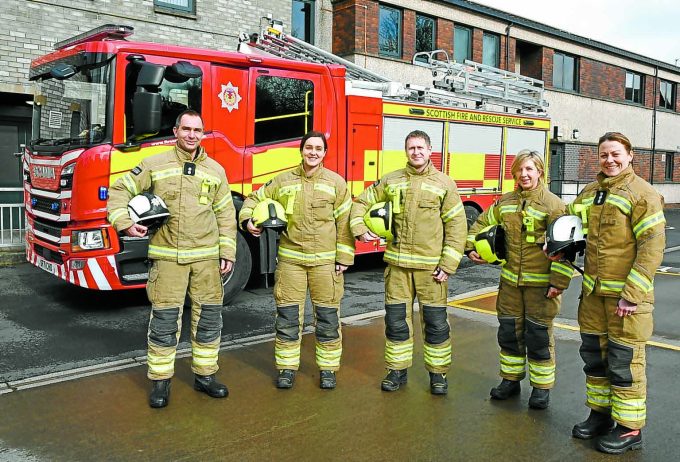
There have been several difficult and tragic incidents that Claire has attended over the years, including fatalities.
But she’s confident the service provides the necessary support to help its staff, citing the wellbeing team as one aspect and adding: “The support of your crew is the best support you can have. Peer support is a massive thing and line manager support too.
“And realising it’s ok to talk about these things.
“I still get affected by some incidents after all this time, everybody does in certain areas.
“But there’s a massive mental health strategy in the service and wellbeing champions, with lots of signposts to help. That’s a change since I started.”
Other changes in her 17 years include the move from being a regional to a national service.
Listing more, she continued: “There’s not as many property fires as there used to be because of the preventative measures that people have in their homes.
“Flooding is a massive thing that’s becoming more prevalent, as are wild fires. We had some last summer.”
While hoax calls and malicious fire setting have always been issues, she acknowledges the impact of the community action team who go out to speak to indviduals, schools and groups about such issues.
And she describes social media as a ‘good and bad thing’, saying: “When you turn up to an incident now there’s people on their phones and before know it you’re on social media and sometimes that’s sensitive information that should not be shared.
“But it’s useful for recruitment and raising our profile. We can spread the word about vacancies we have.”
Her current role is Monday to Friday but she does on call shifts and still attends incidents too.
“I love it because every day is different and there’s a lot of job satisfaction when I feel like I helped somebody and achieved something,” she said. “No two days are the same, so it keeps you on your toes.
“It’s been a very fulfilling career so far and allowed me a good work life balance.”
- To find out about a career in the SFRS and retained opportunities, go to www.firescotland.gov.uk





